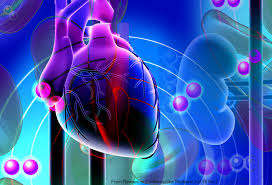Source: express.co.uk
HIGH BLOOD pressure is medically known as hypertension and having the condition puts a person at risk of having a heart attack or stroke. There is a lesser known condition known as secondary hypertension, which can also result in some life-threatening complications. What is it and what are the symptoms?
Blood pressure is the pressure of blood in the arteries which are the vessels that carry blood from the heart to the brain and the rest of the body. A person needs a certain amount of pressure to get the blood moving around the body. Blood pressure naturally goes up and down throughout the day and night and it is normal for it to go up while one is moving about. However, it’s when the overall blood pressure is consistently high, even when resting, that it becomes concerning.
Secondary hypertension is high blood pressure that’s caused by another medical condition.
Secondary hypertension can be caused by conditions that affect the kidneys, arteries, heart or endocrine system.
The condition can also happen during pregnancy.
Secondary hypertension differs from the usual type of high blood pressure which is often referred to simply as high blood pressure.
Primary hypertension has no clear cause and is thought to be linked to genetics, poor diet, lack of exercise and obesity.
Similar to primary hypertension, secondary hypertension usually has no specific signs or symptoms, even if the blood pressure has reached dangerously high levels.
If a person has been diagnosed with high blood pressure, having any of these signs may mean the condition is secondary.
hese include high blood pressure that doesn’t respond to blood pressure medications, very high blood pressure, high blood pressure that no longer responds to medication that previously controlled the blood pressure, sudden-onset high blood pressure before age 30 or after age 55, no family history of high blood pressure and no obesity.
In a study with Singapore Medical Journal, secondary hypertension in adults was investigated.
The study noted: “Secondary hypertension occurs in a significant proportion of adult patients.
“Recognition, diagnosis and treatment of secondary causes of hypertension lead to good clinical outcomes and the possible reversal of end-organ damage, in addition to blood pressure control.
“Left undiagnosed, secondary hypertension can lead to resistant hypertension, cardiovascular and renal complications.
What are the causes of secondary hypertension?
Mayo clinic said: “A number of conditions can cause secondary hypertension.
“Several kidney diseases may cause secondary hypertension and these include diabetes complications, polycystic kidney disease, glomerular disease or renovascular hypertension.
“Renovascular hypertension is often caused by the same type of fatty plaques that can damage the coronary arteries or a separate condition in which the muscle and fibrous tissues of the renal artery wall thicken and harden into rings.
“This condition can cause irreversible kidney damage.”
The greatest risk factor with secondary hypertension is having a medical condition that can cause high blood pressure, such as kidney, artery, heart or endocrine system problems.
Secondary hypertension can worsen an underlying medical condition a person may have that’s causing their high blood pressure.
If a person doesn’t receive treatment, secondary hypertension can also be associated with other medical conditions.
These include damage to arteries, aneurysm, heart failure, weakened and narrowed blood vessels in the kidney, thickened or torn blood vessels and trouble with memory or understanding.
If you suspect you may have secondary hypertension, speak with your GP about the best next steps to take to help better manage the condition.
